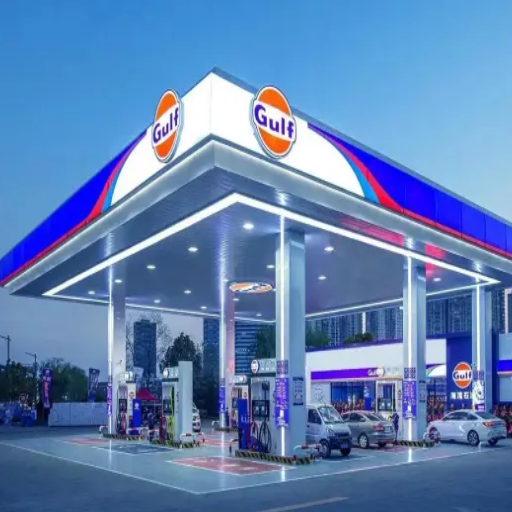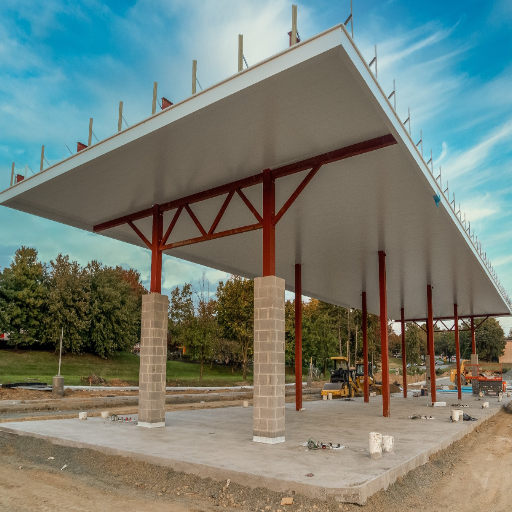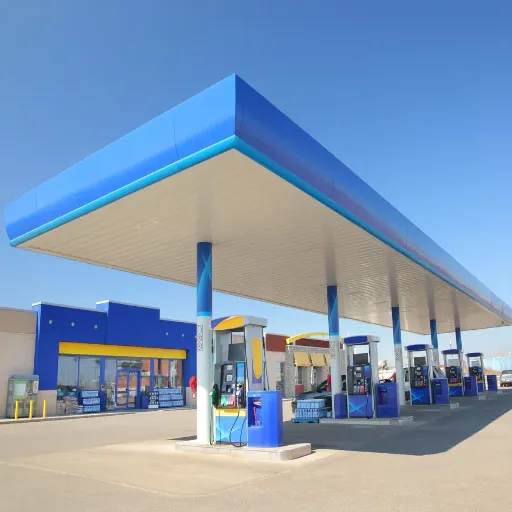Building a gas station from scratch is no small matter; it is a complex project that calls for planning, decisions made carefully, and a thorough understanding of compliance and industry standards. Whether you have been in business for a while or are stepping into the fuel retail trade for the first time, this guide will serve as a blueprint to realize your idea. From identifying the perfect area to zoning laws, permits, and layout design for top efficiency, we’ll look at the crucial steps towards building a good and profitable gas station. By the end of this article, you will be fully armed with everything you need to walk confidently through the doors to start your project.
Understanding the Gas Station Business
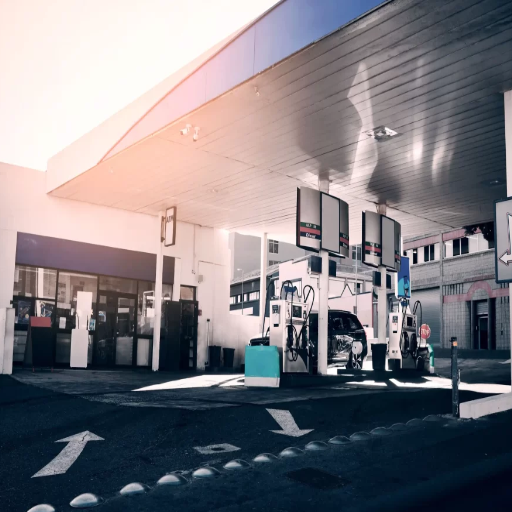
Gas station businesses exist at the crossroads of fuel sales, convenience retail, and customer services. The business model makes most of its revenue by selling fuel, but non-fuel items such as snacks, beverages, and perhaps vehicle supplies can considerably sustain the business in terms of profits. Location with maximum traffic, competitive pricing, and consistent supply are some factors that could make or break the business. Sustaining customer loyalty is only possible when relationships with fuel suppliers are phenomenal and customer service is excellent. Besides, margins from fuel sales are minimal; hence, diversification through additional services such as car washes or EV charging facilities is required. Market trends and consumer needs must be studied to gain a good foothold in this trade.
Overview of the Gas Station Industry
The gas station industry is transforming substantially due to changing market demands and technological developments. Recent data indicates that the gas station market is worth more than $2 trillion worldwide and is growing steadily, with mobility and vehicle ownership rates rising globally. Yet with the accelerating rate of change toward renewable energy, traditional fuel sales are under pressure.
Integration of alternative fuels is one notable trend. Several gas stations have added EV charging facilities and biofuel for the new green energy transition. However, with the EV market set to grow by more than 20% per annum in the coming years, gas stations will have to diversify further. Furthermore, these little convenience stores inside gas stations are becoming a significant income generator, contributing more than 60% to sales from inside as consumers increase their demand for quick-service food and beverage outlets.
Technological innovations are also changing operational experiences as automated payment mechanisms, loyalty schemes, and mobile apps work towards improving customer experiences and integrating efficiencies. Environmental laws also impact the industry, pushing fuel storage and dispensing facility changes to minimize carbon emissions and environmental hazards. All these changes fast-track the gas station industry’s rapid transition to satisfy marketplace demand and sustainability.
Benefits of Owning a Gas Station
Owning a gas station can be profitable with steady cash flows and potential earnings from fuel sales. The gas station business is somewhat resilient during a recession because fuel is necessary in different economic phases. With a $2 trillion-plus valuation in recent years, the fuel retail market proves that demand for fuel and allied services is increasing.
For one thing, with a gas station, you add diversification. Most gas stations generate income aside from selling gasoline through convenience stores, car washes, or fast-food outlets, so that owners can maximize their earnings. For example, convenience store sales have been found to provide roughly 30% of the shared revenue of a gas station, with many stores obtaining more from these add-on services.
Technology has been improving the gas station’s profitability. Through automated systems and data analytics tools, inventory could be managed better, operational costs could be reduced, and customers could be engaged personally. Using such technology, an owner could optimize prices and issues relating to loyalty programs to retain customers.
Gas stations in urban areas boasting heavy traffic will also benefit from the constant flow of customers. Strategic location selection is thus instrumental in boosting profitability, with traffic volumes and population density being key parameters.
Finally, although operators must comply with environmental laws within a gas station’s precincts, these regulations usually pave the path for innovation and government incentives. For instance, most gas stations now admit to installing electric vehicle (EV) charging stations, tapping into the growing market of EV owners, and presenting themselves as sustainable energy hubs.
Thus, owning a gas station involves stable demand, diversification of income options, and being open to market trends—one dynamic opportunity worth every investor and entrepreneur’s while.
Challenges in the Gas Station Business
Lured by profits, the gas station business has been bestowed with sundry challenges that an entrepreneur needs to tackle to remain competitive and profitable. Price volatility is a big concern with its rise and fall due to crude oil markets, geopolitical tension, and disruption in logistics. Recently, global oil prices have spiked sharply, affecting clearing profit margins on which gas stations already work with thin marginal profit per gallon.
With these challenges, increased use of renewable energy and stricter environmental laws come into play. Governments worldwide are attempting to enforce laws that bring down carbon emissions and aim to launch initiatives for electric vehicles (EVs) and renewable energy. This development has posed an existential threat to gas stations, which now find their business dwindling. Therefore, they have been forced to diversify by installing EV charging ports and offering expanded services in their convenience stores.
Another hurdle that gas stations have to deal with is the operational expenses. The cost of labor, maintenance, and credit card processing fees is rising, thereby squeezing an already thin bottom line. For example, the credit card processing fee for most fuel purchases may substantially diminish profit margins, given the high volume of customers using this mode of payment.
Further, consumer preference changes toward convenience and sustainability have intensified competition. More and more urban consumers patronize competing models, including fast charging stations and retailer-embedded fuel pumps. Gas stations must invest heavily in technology, sustainability, and customer service to retain their relevance.
Finally, perennial concerns like theft, vandalism, and payment fraud have led to heavy surveillance and digital transaction security investments, which is just another layer of complexity on an already complex business. These challenges can be overcome only through a multi-pronged strategy, comprising adaptation, innovation, and resilience.
Creating a Business Plan for Your Gas Station
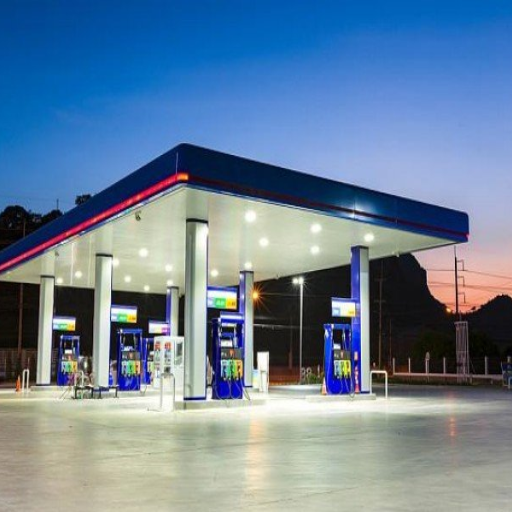
Market Research: Begin your venture by studying the market. Identify local demand for fuel, customer demographics, and competition in the area. Evaluate traffic patterns, neighboring businesses, and community requirements to ensure your gas station is properly located.
Financial Projections: Pull out your pocket calculator and estimate the money you’ll need upfront for expenses like land, construction, licenses, pumps, and inventory. Then, imagine ongoing costs such as labor, maintenance, and utilities. Next comes the detailed forecast for revenue expected from fuel sales, items in the convenience store, and any optional services like the car wash.
Location and Infrastructure: Select a site with visibility and ease of access. Ensure enough room for the fueling stations, parking, and other amenities you plan to provide. Give the whole place a facelift for market appeal and bring it up to code with safety and environmental regulations.
Product and Service Offerings: Decide on your fuel products (diesel, gasoline, electric charging) and other services such as a convenience store, food and beverages, or automotive maintenance. Customized offerings will fit the needs of the clientele you expect.
Marketing Strategy: Prepare a rock-solid marketing plan with promotions, loyalty plans, and online and local marketing campaigns. Through social media and digital avenues, attract drivers and create loyal devotees to the brand.
Risk Management: Moves to be taken to guard against hazards, which include fluctuating fuel prices, environmental standards, and security issues. Investing in insurance, emergency response planning, and superior cybersecurity will stand you in good stead.
Concentrating on these components will help you create a succinct and compelling business plan for your gas station’s operational and financial success.
Essential Components of a Gas Station Business Plan
In your gas station business plan, you can answer the following questions, which cover the main factors as identified by industry experts:
Key factors for a gas station’s profitability: Profitability depends on competitive fuel prices, quality customer service, location, and diversified revenue streams. Offering merchandise at a convenience store, car wash services, or grocery sales can bring in more revenue than fuel.
Permits and licenses: This depends on where you are located. You must obtain environmental permits for fuel storage, business licenses, etc. You should check with the local government beforehand to ensure all required documents comply with starting activities.
Investment required to open a gas station: The initial investment can range from hundreds of thousands to millions of dollars, depending on the cost of land, fuel infrastructure, convenience store construction, and equipment. Remember to include working capital for inventory and other operating expenses during the first few months.
Operational activities: This outlines operational challenges, including understanding fuel price fluctuations, managing account executives and employees, and ensuring that all legal changes are implemented promptly. Technology may help solve issues such as inventory management, security, fire detection systems, and point of sale (POS) efficiency.
Marketing drives sales: Marketing is more effective if it includes loyalty programs and promotions through social media. Another option is to form a strategic partnership with a delivery service or a mobile app that supports fuel payments.
Planning to address these fundamental issues will provide a comprehensive strategy for work efficiency and financial viability in the business plan.
Market Analysis for a New Gas Station
The fuel retailing industry continually evolves due to changing consumer preferences, technological innovations, and environmental issues. Analyzing location, competition, consumer behavior, and emerging trends is imperative to establishing a profitable gas station in this market.
Location and Accessibility: The correct location is necessary to attract consistent traffic. Areas of high vehicle density, where a highway passes through, or with easy access to residential or commercial zones, are prime choices for gas stations. A study reveals that gas stations near busy four-way intersections and growing suburban neighborhoods outperform locations in less-traveled or isolated areas. Accessibility, which entails entry and exit points for customers, is a decision-making factor.
Competitive Landscape: Knowing what the competition presents is essential. The market is dominated mainly by big chains such as Shell, BP, and Chevron, which have extensive resources and loyal customer programs. However, independent operators can remain competitive by promoting unique value propositions like lower prices, more amenities, or better customer relations. It is worth paying close attention to the area pricing trend to stay competitive without compromising profit margin.
Consumer Demand and Preferences: Fuel stations nowadays service more than just drivers. Convenience stores, coffee shops, and quick-service restaurants have become standard outlets offshoots from gas stations, offering customer experience and revenue generation opportunities. Research further states that in the coming years, customers tend to value stations that offer clean facilities with good food and beverage selection and quality loyalty programs. Many customers also prefer environmentally friendly companies or the more fuel-efficient and alternative energy solutions.
Alternative Fuel Trends: With the growth of electric cars and hybrid technology, the demand for EV charging stations is also increasing. Studies report that the global EV charging infrastructure market will grow enormously in the next 10 years. Providing EV chargers at new gas stations could give an upper hand in attracting a greater clientele.
Regional Trends and Financial Insights: Economic growth in the region and data about fuel consumption can also provide crucial hints about expected performance. Research indicates that fuel demand is high in areas with population or industrial growth. Also, the margins on fuel sales remain relatively low; therefore, non-fuel sales crucially matter for profitability, with many stations seeing as much as 60% of their revenue coming from convenience store sales.
When these factors are leveraged, and market sight is kept, a new gas station venture can greatly meet prospects for longevity in a highly competitive and fast-changing industry.
Determining the Business Structure
Choosing a suitable business structure is a key step for a new gas station venture, as the choice affects taxation, liability, and operational flexibility. Standard options include sole proprietorship, partnership, limited liability company (LLC), and corporation.
Sole proprietorships are easy to set up. The disadvantage is that the owner is liable for all the business’s debts and obligations. This option is usually considered by persons seeking managerial ease and low startup costs.
Limited Partnerships apply when a business has two or more owners. General partners make decisions jointly but are potentially held liable jointly. Limited partnership clauses can curb some partnership liabilities and impose stricter operational stipulations.
LLCs have become the structure of choice for small—to medium-sized gas station owners because of limited personal liability and pass-through taxation. 76% of small-business owners say that LLC status best balances risks and benefits for their needs. Added to these perks, LLCs are relatively inexpensive to maintain and offer a good deal of flexibility for management.
A corporation, especially an S Corporation, is suitable for larger operations planning a significant expansion. Corporations profit from the separation of civil penalties and personal liabilities, as well as double taxation (C Corporations) or strict ownership restrictions (S Corporations). Industry statistics show that approximately 19% of gas stations are run as corporations, fitting for large-scale entities benefitting from a stiff legal shield.
Every business structure, financing route, and personal liability affects licensing and permitting differently. New gas station owners should do an exhaustive review of their outlooks for the future, tolerance for liability, and tax preferences, for these will dictate the structure most beneficial to their success.
Permits and Licenses Required to Build a Gas Station
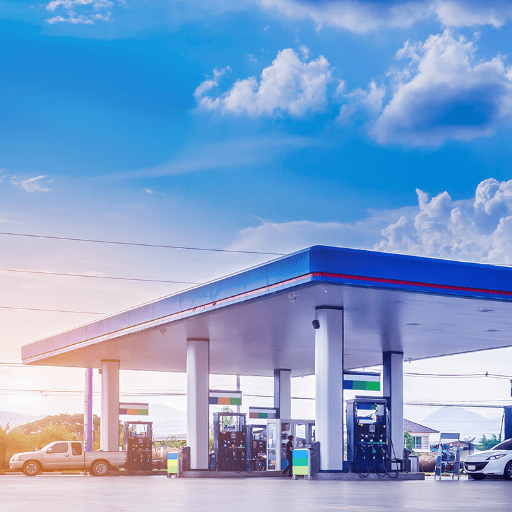
Building a gas station requires various permits, licenses, and approvals. Zoning and land use permits are among the most important, guaranteeing that the location chosen is allowed by local zoning laws to be a gas station. One also requires environmental permits for the storage of fuels, vapor recovery, and spill prevention, among other things. On the other hand, construction permits are needed to approve the building plans to ensure that the agreed-upon safety and building codes are implemented. Business licenses and fuel-related permits, such as those for underground storage tanks, will be needed for the operation. It would be best to consult with local authorities to understand how it works in your area so that you have every piece of paperwork in place before you proceed with your construction.
Types of Permits Needed
One would generally require several permits and licenses to construct and install a gas station. First and foremost, there must be a zoning permit to ascertain that the site conforms to local zoning laws. Environmental permits are then required to cover underground storage tanks, vapor recovery systems, and spill prevention regulations. A construction permit is also necessary to accept building plans and comply with safety and building codes. More relevant documents include the business license needed for legal operation; the fire department permit, which must be secured to comply with fire safety regulations; and health and safety permits, which may vary from place to place. Fuel-related permits will then have to be further acquired for storing and handling hazardous materials, such as gasoline. It is best to consult local authorities and legal or environmental experts to ascertain that these regulations are met at all federal, state, and regional levels.
How to Obtain Necessary Licenses
The permits needed are obtained by identifying the licenses your specific business requires, which may be general business, fire, health, and fuel handling licenses. Ensure your compliance by researching at the local, state, and federal levels. Access application forms and instructions from the local government website or business licensing office. Prepare all necessary documents such as business registration, zoning approval, safety plans, etc. Pass in your completed applications supplemented with any required fees. Where permits of higher difficulty are concerned, such as those involving hazardous materials, hiring an attorney or compliance expert to assist would be beneficial. Remember to check the status of your applications regularly, as timelines tend to fluctuate depending on the permit type and jurisdiction.
Compliance with Local Regulations
All your actions must be in accordance with local laws and regulations within your jurisdiction.” It would be ideal if you start researching zoning codes, environmental regulations, licensing requirements, and safety standards that apply to your business or project. Get permits and approvals before you begin operating, so fines and legal issues can be avoided. Remain aware of any regulation changes by subscribing to industry newsletters or following updates from local governments.” If the requirements are further or in doubt, hire a legal advisor or an industry expert to ensure your operation is compliant and avoid some risks.
Startup Costs: How Much Does It Cost to Build a Gas Station?
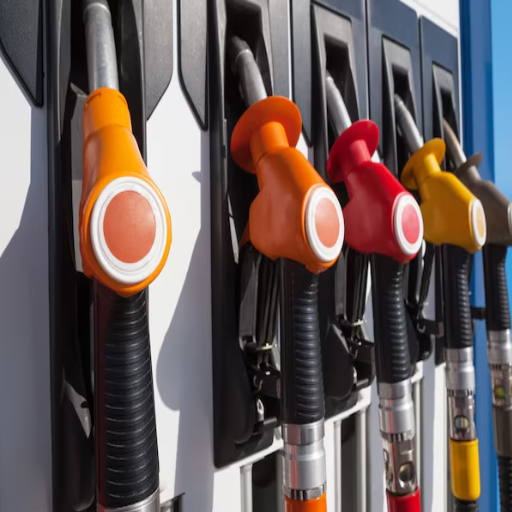
The cost of building a gas station can be all over the place depending on location, size, and design. Somewhere between $250,000 and $2,000,000 and beyond should be expected. These encompass all expenses and costs related to buying the land, constructing the station, equipping the site with fuel tanks, pumps, signage, and the usual inventory. Higher prices for a downtown location or a larger station with additional services like convenience stores or car washes can be expected. It would be wise to draft a detailed budget and consult with industry professionals so that you have an accurate estimate of what your particular project will cost.
Estimating Land and Construction Costs
The price for land and construction of a gas station varies considerably based on location, size, and scope. Land can be purchased anywhere between $100,000 and $2,000,000, depending on whether one is looking for an urban, suburban, or rural area. Prime sites in a metropolitan area are the most expensive, given the traffic volume and potential for earnings.
The costs of construction for gas stations are equally variable. At its very basic, construction entails building the station facility, setting up underground fuel tanks, and setting up the pump systems; anything less could be about $500,000 and around $1,500,000. These prices go even higher with the added feature of a convenience store or car wash. For example, constructing a small convenience store might cost $100 per square foot and upwards, while bigger and more sophisticated setups can easily stretch beyond $400 per square foot.
Further, the work required for site preparation and compliance with zoning laws or environmental regulations increases the overall costs. These services may also include grading, ecological assessment, and utility hookups, costing between $50,000 and $300,000. These factors should be considered while arriving at a gross estimate of land and construction costs for your impending gas station project.
Equipment and Fuel Supply Costs
Equipping a new filling station is another significant expense. Considerable equipment items are fuel pumps, underground storage tanks, POS systems, air compressors, and canopies. Fuel pumps and dispensers are usually priced from $15,000 to $20,000, depending on the brand and technology. Underground fuel tanks, essential for fuel storage, can cost from $50,000 to $100,000, depending on the size and materials used.
POS systems are essential for transactions, inventory management, and customer loyalty programs. Depending on the system’s complexity and features, they cost between $10,000 and $25,000. Additional supporting equipment, such as air compressors used for inflating tires, ranges from $2,000 to $5,000, while canopy structures covering the fueling area range from approximately $30,000 to $100,000, depending on size and design.
Fuel supply cost is a continuing expense and varies depending on market prices, transportation costs, and supplier arrangements. Most gas stations contract with fuel suppliers to guarantee a steady supply, firing off deposits or commitments for bulk purchases. On average, the bulk purchase of fuel inventory upon startup will range from $50,000 to $150,000, depending on fuel type and quantity.
Considering all these costs, initial equipment and fuel supply bills can easily exceed $200,000 to $400,000. These investments are required if you want your gas station to operate efficiently and are a central factor in drawing customers through the doors and serving them appropriately.
Other Startup Expenses
Beyond the business equipment and fuel supply costs, various startup expenses come into play when setting up a gas station. Property acquisition or land leasing will be a significant cost, with the price of land varying immensely. For instance, in urban or high-visibility spaces, pricing can go anywhere from $500,000 to above $1 million, whereas prices for rural lands can be pretty low.
The next component of startup costs is architectural, design, and construction costs. Construction or remodeling a gas station with features like fueling islands, convenience store areas, and restrooms can cost anywhere from $250,000 to $1 million, depending on size, complexity of design, and choice of materials.
License fees and permits add to the startup costs since gas stations must comply with local environmental, fire safety, and zoning regulations. Permits might be upwards of $10,000-$50,000, depending on the area. Also, branding and marketing are significant investments to lure initial visitors, usually around $15,000 to $50,000 for signage, promotional tools, and advertising.
Hiring and training staff are yet other significant expenses. Depending on the size of the operation, hiring and training staff can cost between $20,000 and $50,000. Finally, IT infrastructure expenses like point-of-sale systems, security cameras, and inventory software setup and configuration can cost anywhere from $20,000 to $40,000.
Together, these hidden startup expenses can significantly increase the investments needed to start a successful gas station business, often pushing $1 million or more in most cases.
Funding for Your Gas Station
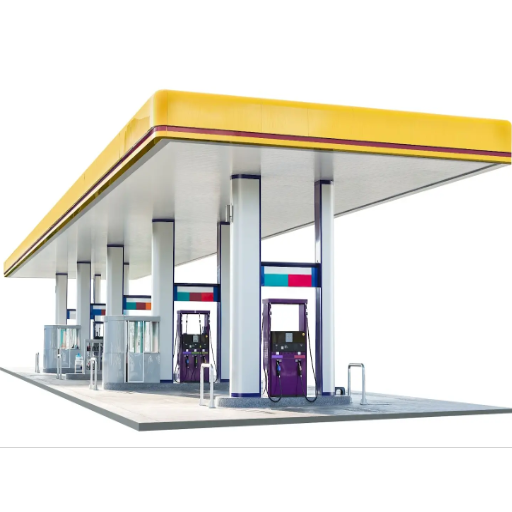
Your gas station may be financed through personal savings, loans, and investments. Small business loans represent one option: your bank can mediate, or the SBA can issue loans with good terms. Additional options may include raising capital by seeking investors or finding business partners to lessen financial exposure. Grants represent another fallback option if the project serves community development and environmental goals. A business plan outlining anticipated costs, revenues, and growth potential should be finished before seeking funds from any lender or investor.
Options for Financing Your Gas Station
Several avenues for financing must be considered while finding gas stations for sale and financing your needs. SBA loans, the most popular, give long repayment terms and competitive interest rates if your business qualifies. Sometimes, people give bank loans by the standards that rarely apply to SBA loans; significant credit history and collateral are usually doubtful. Investors or partners can also offer funding, especially if you wish to share risks and rewards with them. Equipment financing might be a promising avenue for you, given your need for pumps and other equipment so that you can pay for these over time. Of course, grant money is generally geared toward green initiatives that support environmentally friendly upgrades in their station. Whichever path you select, a solid business plan is the most critical tool in persuading your lenders or investors of your gas station’s viability and growth possibilities.
Finding Investors or Partners
Securing investors or partners for your gas station can help promote its growth and stability. One of the most effective ways would be to focus on the growing demand for petroleum and green energy. Recent reports show that the global gas station market size will experience steady growth, fueled by increased dependence on fuel and emerging opportunities in EV charging infrastructure.
The next thing to show potential investors is your gas station’s marketing strategy or unique value proposition. Examples may include new innovative services such as endorsing EV charging stations, which are projected to grow significantly during the next ten years, while governments worldwide keep pushing green transport options. It is promising that, by 2030, there might easily be more than 125 million EVs on the road, providing a relatively untapped opportunity for gas stations’ forward-thinking.
Some great ways of securing investors would be to associate with an organization that offers a franchise opportunity or is a larger fuel distributor, so that these organizations bring branding and customer trust. Investors surely want to target businesses that provide scalable and adaptable plans. Hence, it would be wise for your business model to include the potential for expansion or diversification. Use financial forecasts, market trends, and pertinent data points to add weight to your case and develop an investment pitch that centers on profitability and sustainability.
Applying for Business Loans
In securing a business loan, critical steps for putting on a scale or sustaining the existing facility in cities would require solid preparation, understanding, and anticipating how lenders think. Typical assessments include credit history, cash flow, and the borrower’s business plan. The most recent industry statistics indicated that 28% of small businesses receive financing through traditional banking institutions. At the same time, applicants who have excellent credit scores and well-prepared financial documents experience significantly higher approval rates.
Keeping in view approval, ensure your profit and loss statement, balance sheet, and tax return are current and precisely compiled. On average, funds approved to small and medium enterprises for loans range between $50,000 and $250,000, depending on the specific nature of the business and its market potential. These plans indicate a corresponding level of assurance to the lenders that you will be responsible with this money — choose to purchase more inventory, roll out marketing initiatives, or invest in new technology.
Next to it comes the understanding of loan options. These SBA loans, for example, offer much better terms, with lower interest rates and more extended repayment periods, but the approval process is lengthy. Alternative lenders, including fintech companies, offer more flexible criteria so businesses with fewer assets or lower credit scores can still secure funding, possibly at higher interest rates. Hence, a company would be successful in obtaining financing if it puts in ample research on loan products and customizes applications to satisfy the lender’s requirements.
Building Your Gas Station
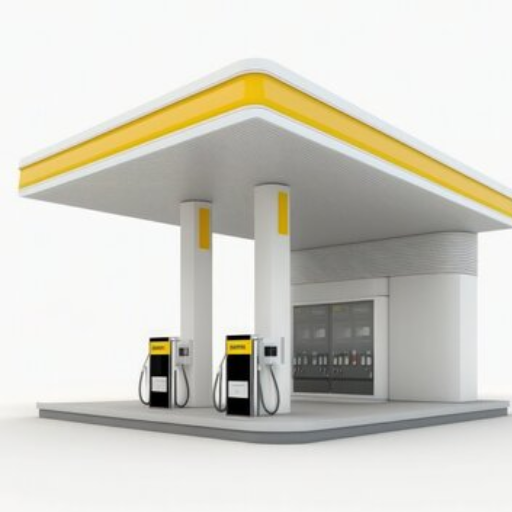
In constructing a gas station, specific steps must be taken. The first thing is to get in a suitable place with lots of visibility and adequate traffic flow. The site has to be checked for zoning laws and environmental regulations. Next, design a gas station that meets basic requirements like dispensing fuel pumps, convenience stores, and adequate parking spaces. Proceed with obtaining permits and licenses from local authorities. Hire dependable contractors for construction, focusing on getting the project done as soon as possible and on budget. Now, they proceed with an agreement for fuel supplies, and safety measures regarding compliance with industry standards are taken.
Choosing the Right Location
Choosing the correct location for a fuel station entails an in-depth analysis of some crucial factors. Closeness to a major road, highway, or high-traffic area ensures visibility and accessibility, the primary factors for customer attraction. Study local demographics and traffic counts to determine places of regular demand for fuel services. Check for competition within the area—locations with minimal direct competitors generally yield higher profitability. Then comes making sure the location abides by the zoning laws and land use regulations. Finally, the land price and potential for future development should be looked at to assist in making an investment decision.
Working with Contractors and Suppliers
Effective collaboration with contractors and suppliers must be inculcated to ensure smooth fuel service or regulatory gas station operations. When selecting contractors for construction, priority should be given to those with well-established knowledge of building fuel stations and ensuring adherence to safety and environmental standards. Studies have indicated that contractors with experience in this field are more likely to deliver the work within time and budget.
Regarding suppliers, the key to success should be forming sturdy relationships with wholesale fuel distributors who provide competitive prices and guarantees of on-time deliveries. Many successful fuel stations manage the delivery of bulk supplies through distributors with well-developed supply chains and valued logistics that can reduce delays. Also, contracts with suppliers should consider allowing flexibility regarding fuel grade and payment terms so that one may alternate according to market demand and customer preference.
According to some industry reports, it is essential to grant the integration of automated inventory systems with some fuel suppliers. The integrated systems further offer benefits, such as monitoring fuel inventory levels in real time and thus ensuring a lower possibility of stock-outs, which eases the reordering process. Establishing long-term relationships with contractors and suppliers who understand your business needs will ultimately generate efficiency in operational logistics and consistent service quality.
Design and Layout Considerations
Successful gas station design requires an interface between function, aesthetics, and customer-centric convenience. Research proves that an efficient layout, sufficiently designed, can primarily determine customer retention and smooth operations. For example, it has been realised that a gas station can enjoy an average increase of over 25% in customer satisfaction with clear signage and friendly traffic flow. Proper angle placement of fuel pumps goes a long way to increase the rate of vehicle movement, thus lessening vehicle waiting time during peak hours.
Lighting is another major factor in weighing safety and ambience. LED lighting is trending owing to its energy-saving features and capability to cover large areas. Forecourts and parking lots should be adequately lit to bolster customer confidence and drive away any possible security threats. Green features such as solar panels or an eco-efficient canopy design can help reduce operational costs and attract environmentally aware customers.
The layout of a convenience store may strongly impact customer purchasing behavior. Research indicates that prominently displaying popular items near entrances or on customer routes increases impulse purchases by 20% on average. Well-spaced aisles and neat and organized shelving promote a positive shopping experience. Designing accessible restrooms with seating areas would then allow customers to remain longer at sites, increasing secondary sales.
Opening Your Gas Station
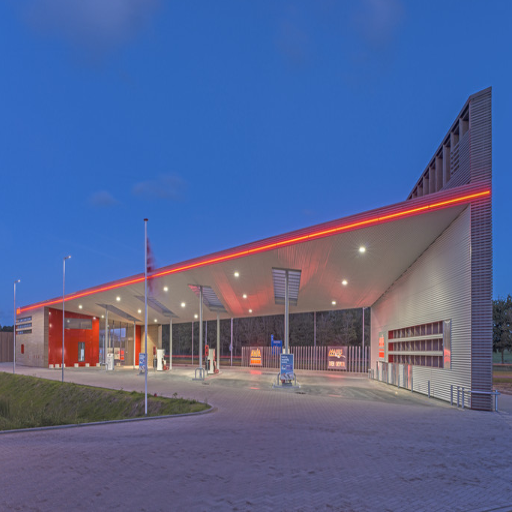
To open your gas station, all equipment must be operative and conform to safety and regulatory standards. The premises must be inspected to ascertain that all local laws about gas stations are being followed. Train your staff accordingly for customer service, equipment operation, and safety rules. Create marketing ideas to attract customers, such as promotions or loyalty programs. Lastly, a soft opening should be performed so unanticipated loose ends can be tied before the official grand opening.
Marketing Strategies for a New Gas Station
Any new gas station launching would be marketed successfully by focusing on visibility and good promotions. Visibility would be created by setting up eye-catching signs at strategic locations for drivers in moving vehicles to catch. An offer, including competitive pricing, introductory discounts, or a fuel rewards program, would lure the first set of customers. Cross-promotions with local businesses and social media advertising would widen the horizon. Another great way of giving back would involve free car washes or giveaways during opening week, helping build goodwill and creating a loyal customer base.
Grand Opening Tips
For the grand opening to succeed, focus on an experience that will make the event memorable and generate the buzz essential to establishing long-term customer relationships. First, choose the correct date and time—weekends increase foot traffic. Current market trends show graphically that businesses offering customers interactive engagement during their opening events, such as live demos or free workshops, have an approximate 30% uplift in customer engagement.
On the digital front, build anticipation by sharing countdowns on social media while running targeted digital campaigns to reach your local community directly. Similar settings have reported a 25% bump in event attendance through geotargeted social ads. To maximize outreach, complement digital efforts with offline means, from flyers to posters plastered around local neighborhoods.
Meanwhile, exclusive deals, like “discount for first 50 customers,” loyalty cards, or flash sales in the first week, will incentivize guests to stick around for more engagement and extended returns. Invite local players and big names to the grand opening to boost word-of-mouth and online exposure. Viral-worthy posts and mentions can pull in a massive crowd on their own! A cocktail of fun events and data-backed actions will make your grand opening memorable.
Ongoing Operations and Management
Effective ongoing operations and management require a thorough understanding of prevailing trends and data-driven strategies to guarantee sustainable growth. Systematically measuring customer trends and behaviors can reveal opportunities to set inventories, price appropriately, and run effective campaigns. Research shows that businesses implementing customer loyalty programs observe an average revenue increase of 20% to 25%.
Technology supports back-end operations, such as integrated POS and inventory management software, which, when properly employed, lessen human errors while adjusting stock levels to meet demand. According to industry data, companies with automated systems operate 30% more efficiently in inventory management activities.
Organizationally competing environmentally is also key for operational success.
Consistent training programs and good work culture enhance productivity and customer satisfaction. Around 85% of employees surveyed say that performance improves when their employers invest in continuous skill development.
Finally, regularly checking industry standards and adapting oneself according to customer demands guarantees sustainable success. Proactive and agile management decisions allow a business to respond quickly to market trends, thus maintaining its competitive advantage in an ever-changing marketplace.
Reference Sources
“Training Required for Quality Management in Gas Station Construction Projects”
Frequently Asked Questions (FAQs)
Q1: What are the initial steps to take when planning to build a gas station?
A1: The first steps include conducting thorough market research to assess demand, identifying a suitable location, and drafting a detailed business plan. Securing financing and obtaining the necessary permits and licenses are also crucial early-stage tasks.
Q2: What permits and licenses are required to build and operate a gas station?
A2: Requirements vary based on location, but typically include zoning permits, environmental clearances, fuel storage permits, and business operation licenses. It’s essential to consult local authorities for a complete list of required documentation.
Q3: How much does it cost to build a gas station?
A3: The cost can range from $250,000 to over $2 million, depending on location, size, fuel capacity, and additional features like a convenience store or car wash. Developing a detailed budget is critical to estimate expenses accurately.
Q4: What safety measures need to be implemented during construction?
A4: Safety measures include proper fuel tank installation, compliance with fire codes, and ensuring site structures meet engineering standards. Regular inspections are also vital to adhering to safety regulations and avoiding hazards.
Q5: How do I choose a fuel supplier for my gas station?
A5: When selecting a fuel supplier, consider pricing, delivery schedules, contract terms, and brand reputation. Partnering with a recognized fuel brand can also help attract customers by building trust.





